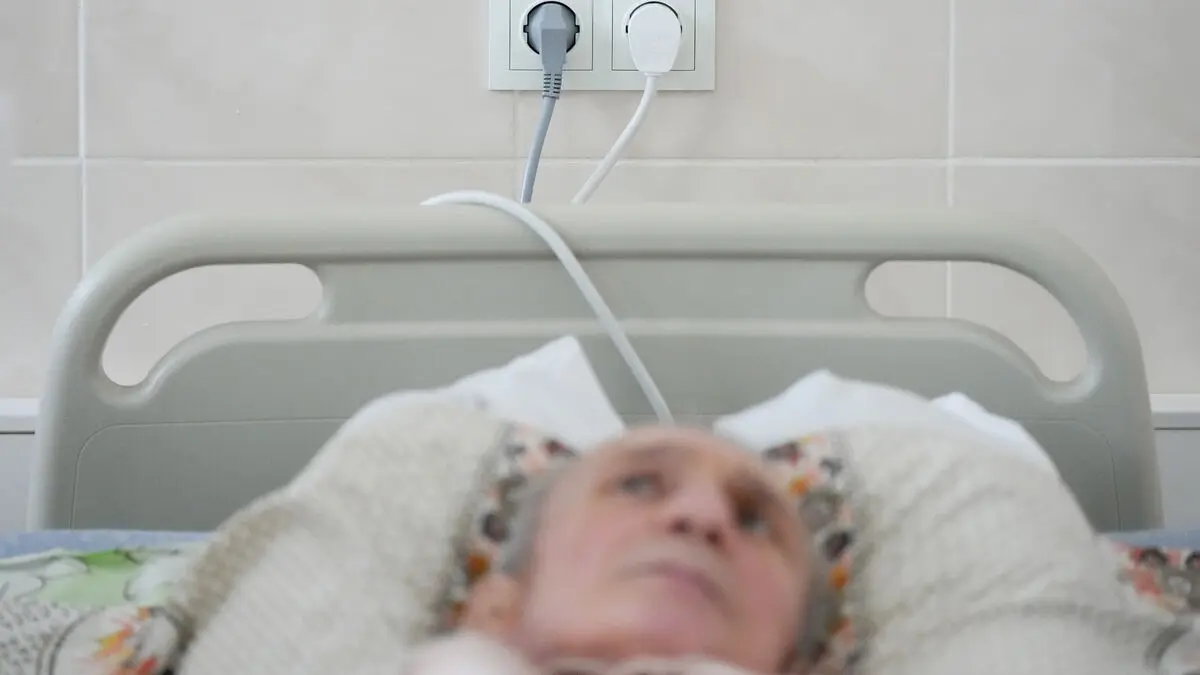The power comes and goes in Sjostka in northern Ukraine, just over five miles from the border to Russia. For 40-year-old Zinaida Kot, it's more than an inconvenience in everyday life.
It's bad. We get very anxious when there's no electricity, she says to AP in a hospital bed, connected to a dialysis machine.
The machine, which purifies the blood of kidney patients, gets power from a shaky generator.
Without this care, I would die. I wouldn't exist, says Zinaida Kot.
"Destroyed again"
In early October, a major Russian attack was directed at Sjostka, which had around 70,000 inhabitants before the larger outbreak of war in 2022. Attack drones struck, among other things, the train station, where trains were set on fire and a man was killed. The power, gas, and water supply were also knocked out.
Just over two weeks later, the power and water are back, but only to a limited extent, for a few hours a day.
And that really worries the residents because we can't predict the power outages. We cook something and then it gets destroyed again, says Mayor Mykola Noha.
Larger, more targeted
Russia's air attacks have grown in strength over the past few months. Like in previous years, the attacks on Ukraine's power grid have escalated as autumn and cold arrive. Some nights, hundreds of drones and missiles attack.
On the ground in Ukraine, a new tactic is discernible: much larger attacks on individual regions, to overwhelm the defense and local systems.
They haven't succeeded in attacking the national infrastructure because it's much better protected now and the operators know how to handle it, says Oleksandr Chartjenko, an expert on the Ukrainian energy sector.
The attacks are worst in the north. In a major attack on the Chernihiv region on Tuesday, the power was knocked out for hundreds of thousands of people, while several civilians were killed.
Cooking outdoors
On the streets of Sjostka, reserve generators are standing and humming. When it's been at its worst, many have cooked outdoors over an open fire, residents report.
The hospital has been getting power from reserve generators for three weeks now. They burn half a ton of fuel a day at great expense.
Every day, 23 people come there to receive life-saving dialysis treatment in dimly lit premises. The lights have been dimmed to save power.





